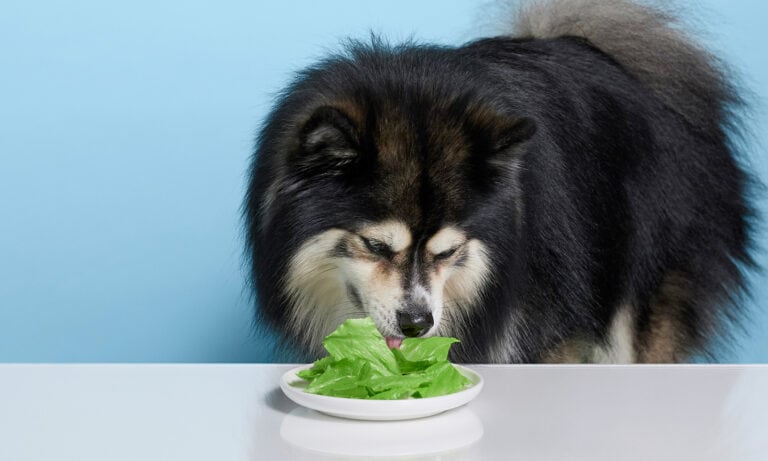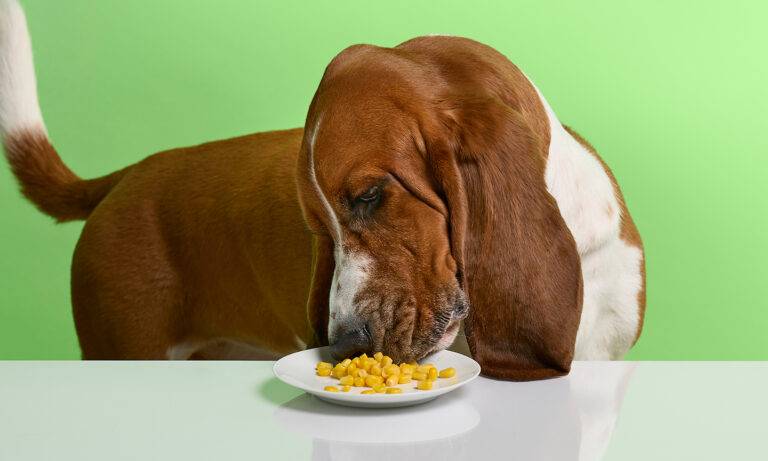Looking to add a little extra flavor to your dog’s meal? You might be wondering, “What seasonings can dogs have?” While many herbs and spices are off-limits, there are plenty of options that can enhance the flavor of your dog’s food without harming their health. However, it’s important to know which ones are safe, as well as the right quantities to use.
If you want to add spices to your dog’s food or to your very own homemade treats, Stephanie Howe, DVM, a pet health representative at Chewy, suggests working with a pet nutritionist or a pet nutrition company to help ensure well-balanced recipes. They can recommend spice ingredients and amounts that are both safe and tasty.
That said, here are 14 spices and herbs safe for dogs—and 23 they should avoid.
Before introducing any new food into your dog's diet, always check with your veterinarian.
In This Guide:
What Spices Are Good for Dogs?
Some herbs and spices for dogs are beneficial, but they should still only be served in moderation. And if you’re adding them to treats, keep in mind that all treats combined should make up no more than 10% of the total calories of your dog’s daily diet, with the rest coming from a complete and balanced dog food.
If you want to spice things up for your dog, start with a small amount of these safe herbs and spices and monitor their reaction before adding more.
Anise Seeds
- Health benefits: May help with nausea, gas, and other digestive issues, as well as congestion and coughing; increases energy
- How to prepare: Grind the seeds into a powder.
- How much to serve: 1/16 teaspoon
Cinnamon
- Health benefits: Anti-inflammatory, antibacterial, and antioxidant properties; helps regulate blood sugar levels; promotes heart health; alleviates digestive upset
- How to prepare: Grind into a powder.
- How much to serve: 1/8–1/2 teaspoon (depending on your dog’s size)
Fennel (Florence Fennel, Finocchio)
- Health benefits: Supports the immune system; freshens breath; promotes healthy digestion
- How to prepare: Add 1 teaspoon of fresh or dried fennel seeds to 8 ounces of boiling water. Let cool and add a couple of teaspoons to your dog’s water.
- How much to serve: 2 teaspoons
Ginger (White Ginger, Butterfly Ginger, Cinnamon Jasmine, Garland Flower, Ginger Lily)
- Health benefits: Helps with digestive upset, like vomiting, gas, and bloating; eases arthritis symptoms in joints and muscles; anti-inflammatory
- How to prepare: Grate raw ginger.
- How much to serve: 1/4–3/4 teaspoon; mix into food or use to make homemade treats.
Turmeric
- Health benefits: Helps support joints and mobility; antioxidant, anti-inflammatory, antiviral, antibacterial, and antifungal; aids in digestive health
- How to prepare: Grind into a powder.
- How much to serve: 1/8–1/4 teaspoon per 10 pounds of body weight
What Spices Are Bad for Dogs?
But not all spices are good—or even safe—for dogs, particularly if they ingest a large amount.
If your dog eats any of the spices listed below, contact your vet or the Pet Poison Helpline (855-764-7661, a consultation fee applies) to determine if they’re at risk and for advice on what to do next.
The following spices can be dangerous to dogs and are off-limits:
- Allspice: It contains essential oils (eugenols), which can be toxic to dogs.
- Aloe vera: It contains saponins and anthraquinone glycosides, which are toxic components that pose a risk to dogs.
- Bay leaf/bay laurel: It contains toxic eugenols and other essential oils.
- Black pepper: It contains a substance called piperine that can irritate your pup’s digestive system.
- Cayenne pepper: The spicy compound (capsaicin) can irritate your dog’s throat, eyes, and nose.
- Chili powder: The spiciness can cause stomach problems and the individual spices contained in the mixture (garlic, for example) may have their own toxic effects.
- Cloves: It contains eugenols that may cause vomiting and other digestive symptoms.
- Cocoa powder: It contains theobromine and caffeine, both of which are highly toxic to dogs.
- Curry: It’s not toxic, but its spiciness can cause stomach upset.
- Garlic: It contains a compound called thiosulfate and other oxidants that are toxic to dogs and can damage red blood cells. Garlic is toxic in all forms: raw, cooked, and powdered.
- Mace: It contains a chemical called myristicin that can cause serious health problems, including hallucinations and seizures.
- Marjoram: It’s toxic to dogs and contains gastrointestinal irritants.
- Mustard: All forms of mustard, including honey, yellow, and Dijon, are toxic to dogs.
- Nutmeg: Like mace, nutmeg also contains myristicin.
- Onion/onion powder: It contains sulfoxides and disulfides, which can damage red blood cells and lead to anemia. Onion is toxic in all forms: raw, cooked, and powdered.
- Paprika: The capsaicin in paprika can cause stomach upset in dogs.
- Pumpkin pie spice: It contains a mishmash of spices, like nutmeg, allspice, and mace, that are bad for dogs.
- Salt: Too much salt is dangerous and can be fatal for dogs.
What Herbs Are Good for Dogs?
Whether fresh or dried, the following herbs are safe and can support your dog’s well-being.
Basil
- Health benefits: Anti-inflammatory, antioxidant, and antimicrobial; calming effects for anxiety-prone dogs; contains vitamins A, B complex, C, and E
- How to prepare: Fresh or dry, dusted on food.
- How much to serve: 1/8–1 teaspoon dry, or 1/2–3 teaspoons fresh
Chamomile (German Chamomile)
- Health benefits: Eases anxiety and relaxes muscles; anti-inflammatory; eases inflammatory digestive conditions, like IBD
- How to prepare: Add to your dog’s water or food after talking to vet about the appropriate dosage amount.
- How much to serve: 1 teaspoon in one cup of water to make chamomile tea
Cilantro (Coriander, Chinese Parsley, Dhania)
- Health benefits: Vitamin A promotes eye health; aids the immune system; assists with fur and skin health; helps with digestive upset; freshens breath; antioxidant, antimicrobial
- How to prepare: Sprinkle a pinch on your dog’s food.
- How much to serve: 1/16 teaspoon, fresh or dried
Dandelion
- Health benefits: Can work as a diuretic; may support liver health; aids digestion; antimicrobial, antioxidant, and flavonoid properties; source of several vitamins and minerals
- How to prepare: Make a tea or sprinkle fresh or dried dandelion on your dog’s food.
- How much to serve: 1 teaspoon, dried or fresh, for every 20 pounds of body weight
Dill
- Health benefits: Soothes the gastrointestinal tract; helps with gas and constipation; freshens breath; provides iron, vitamin A, and vitamin C
- How to prepare: Make a dill tea with 1 teaspoon of dill and 8 ounces of water or sprinkle dried dill on your dog’s meal.
- How much to serve: 1/4–1 teaspoon, dried, or 2–8 ounces of tea.
Milk Thistle
- Health benefits: Antioxidant and anti-inflammatory; can aid with various health conditions, including liver disease, Cushing’s disease, pancreatitis, irritable bowel disease, gallbladder disease, and cancer
- How to prepare: Can be given as an extract, capsule, or powder, but your vet can give you specific recommendations for your dog.
- How much to serve: Ask your vet. Serving size varies depending on your dog’s weight, age, and health condition.
Rosemary (Anthos)
- Health benefits: Antioxidant and antimicrobial; aids in digestion; promotes heart health; provides iron, calcium, and vitamin B6
- How to prepare: Sprinkle fresh or dried rosemary on your dog’s food. Crush dried rosemary to avoid sharp edges.
- How much to serve: 1/8–1/2 teaspoon, dried or fresh
Sage (Common Sage, Garden Sage)
- Health benefits: Antioxidant, antimicrobial, and anti-inflammatory; supports the immune system; soothes digestive issues; fights seasonal allergies; provides vitamins A, E, and K, plus calcium, magnesium, potassium, phosphorus, and zinc
- How to prepare: Mix fresh or dried sage into your dog’s food.
- How much to serve: Up to 1 teaspoon, in moderation
Thyme (Common Thyme, Garden Thyme, German Thyme)
- Health benefits: Antioxidant, antimicrobial; provides vitamins A, C, and K, plus iron, magnesium, potassium, calcium, and fiber
- How to prepare: Sprinkle dried or chopped fresh thyme onto dog’s food.
- How much to serve: No more than 1 teaspoon, dried or fresh, once a day
What Herbs Are Bad for Dogs?
While many herbs can be beneficial for dogs, some can be toxic or cause adverse reactions, so it's essential to know which ones to avoid for your pup's safety.
Don’t give your dog the following herbs:
- Hops/hop plant: Both are toxic to dogs and can lead to death in a matter of hours.
- Mint: Some types of mint (pennyroyal) are toxic to dogs, while others (peppermint and spearmint) may cause stomach upset if eaten.
- Oregano: Oregano is mildly toxic to dogs and can cause digestive upset if a lot is eaten.
- Parsley (Italian parsley and spring parsley): In large amounts, certain types of parsley are toxic to dogs.
- Spanish thyme: It contains toxic essential oils and can irritate your dog’s skin.
FAQs About Spices for Dogs
Q:Can dogs eat paprika?
A:No, dogs shouldn’t eat paprika. It’s not toxic for pups, but the capsaicin can cause tummy trouble and irritate the inside of your dog’s mouth.
Q:Can dogs have Italian seasoning?
A:No, dogs shouldn’t have Italian seasoning. It contains a combination of herbs and spices, like garlic and oregano, that can be toxic to pets.
Q:Can dogs have salt and pepper?
A:No, dogs shouldn’t have salt and pepper. Large amounts of salt can be dangerous, while pepper contains a substance called piperine that can irritate your dog’s digestive system.
Q:Can I sprinkle cinnamon on my dog’s food?
A:Yes, you can sprinkle cinnamon on your dog’s food. Stick to around 1/8 teaspoon (small dogs) to 1/2 teaspoon (large dogs) once a day.
This content was medically reviewed by a veterinarian.
Share:









